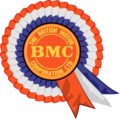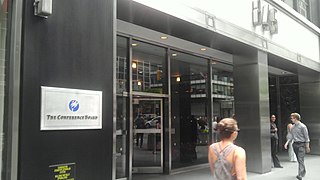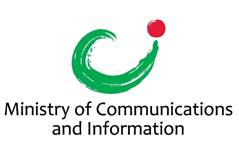Related Research Articles

The British Motor Corporation Limited (BMC) was a UK-based vehicle manufacturer, formed in early 1952 to give effect to an agreed merger of the Morris and Austin businesses.
The Executive Yuan is the executive branch of the government of the Republic of China (Taiwan). Under the amended constitution, the head of the Executive Yuan is the Premier who is positioned as the head of government and has the power to appoint members to serve in the cabinet, while the ROC President is the head of state under the semi-presidential system, who can appoint the Premier and nominate the members of the cabinet. The Premier may be removed by a vote of no-confidence by a majority of the Legislative Yuan, after which the President may either remove the Premier or dissolve the Legislative Yuan and initiate a new election for legislators.
Convergent Technologies, Inc., was an American computer company formed by a small group of people who left Intel Corporation and Xerox PARC in 1979. Among the founders were CEO Allen Michels, VP Engineering Bob Garrow, head of marketing Kal Hubler, and operating system architect Ben Wegbreit. Convergent was primarily an OEM vendor with their computers resold by other manufacturers such as ADP, AT&T, Burroughs, Four-Phase Systems, Gould, Mohawk, Monroe Data Systems, NCR, and Prime. The company was purchased by Unisys in 1988.
The British Railways Board (BRB) was a nationalised industry in the United Kingdom that operated from 1963 to 2001. Until 1997, it was responsible for most railway services in Great Britain, trading under the brand name British Railways and, from 1965, British Rail. It did not operate railways in Northern Ireland, where railways were the responsibility of the Government of Northern Ireland.
Mulesing is the removal of strips of wool-bearing skin from around the breech (buttocks) of a sheep to prevent the parasitic infection flystrike (myiasis). The wool around the buttocks can retain feces and urine, which attracts flies. The scar tissue that grows over the wound does not grow wool, so is less likely to attract the flies that cause flystrike. Mulesing is a common practice in Australia for this purpose, particularly on highly wrinkled Merino sheep. Mulesing is considered by some to be a skilled surgical task. Mulesing can only affect flystrike on the area cut out and has no effect on flystrike on any other part of the animal's body.

The Federal Identity Program is the Government of Canada's corporate identity program. The purpose of the FIP is to provide to the public a consistent and unified image for federal government projects and activities. Other objectives of the program include facilitating public access to federal programs and services, promoting the equal status of the two official languages, and achieving better management of the federal identity. Managed by the Treasury Board Secretariat, this program, and the government's communication policy, help to shape the public image of the government. In general, logos – or, in the parlance of the policy, visual identifiers – used by government departments other than those specified in the FIP must be approved by the Treasury Board.
The Kaiser-Frazer Corporation was an American automobile company. It was founded jointly by industrialist Henry J. Kaiser and automobile executive Joseph W. Frazer. In 1947, the company acquired the automotive assets of Graham-Paige, of which Frazer had become president near the end of World War II. Kaiser-Frazer was one of a few US automakers to achieve success after World War II, if only for a few years. Joseph W. Frazer left the company in 1949, replaced as president by Henry's son Edgar F. Kaiser.

The statutory boards of the Government of Singapore are autonomous organisations that have been tasked to perform an operational function by legal statutes passed as Acts in the Parliament of Singapore. The statutes define the purpose, rights and powers of each authority. These organisations would usually subsequently report to one specific ministry. This list includes both current and new statutory boards formed.

The Conference Board, Inc. is a 501(c)(3) non-profit business membership and research group organization. It counts over 1,000 public and private corporations and other organizations as members, encompassing 60 countries.

The Australian Film Commission (AFC) was an Australian government agency was founded in 1975 with a mandate to promote the creation and distribution of films in Australia as well as to preserve the country's film history. It also had a production arm responsible for production and commissioning of films for the government. It was superseded by Screen Australia from 1 July 2008.

The Ministry of Communications and Information is a ministry of the Government of Singapore responsible for overseeing the development of the infocomm technology, cyber security, media sectors, as well as the government's information and public communication policies. It is also responsible for maintaining the national library, national archives and public libraries.

The Under Secretary of Agriculture for Farm and Foreign Agricultural Services was the third-ranking official in the United States Department of Agriculture prior to reorganization of several mission areas, announced on May 11, 2017. The mission area of USDA's purpose was to "help to keep America's farmers and ranchers in business as they face the uncertainties of weather and markets..." and that "...deliver[s] commodity, credit, conservation, disaster, and emergency assistance programs that help improve the stability and strength of the agricultural economy." The Under Secretary was traditionally appointed to serve as the President of the Commodity Credit Corporation.
Crown corporations in Canada are government organizations with a mixture of commercial and public-policy objectives. They are directly and wholly owned by the Crown.
The Ministry of Public and Business Service Delivery is a ministry of the Government of Ontario. It is responsible for ServiceOntario, which, among other responsibilities, issues driver's licenses, health cards, birth certificates and other provincial documents to Ontario residents. Additionally, it oversees the Archives of Ontario, and numerous boards and administrative authorities charged with consumer protection in specific sectors and industries, such as condominiums and travel.
The Ministry of Tourism, Culture and Sport, was created on January 18, 2010 when the Ministry of Culture and the Ministry of Tourism were combined under one ministry. Sport was added to the portfolio in 2011. It is responsible for the development of policies and programs and the operation of programs related to tourism, arts, cultural industries, heritage sectors and libraries, in Ontario. The Ministry works in partnership with its agencies, attractions, boards and commissions and the private sector to maximize the economic, cultural and social contributions of its agencies and attractions, while promoting the tourism industry and preserving Ontario's culture and heritage.

The Industrial Organisation and Development Act 1947 enabled the creation of industrial development boards with powers to raise levies from specific industrial sectors in the United Kingdom for co-ordinated action, particularly in research, marketing and industrial re-organisation. These Boards were to report to the Board of Trade and have equal representation from trades unions and employers alongside independent experts.

Woolmark is a wool industry certification mark used on pure wool products that meet quality standards set by The Woolmark Company. It is a trade mark owned by The Woolmark Company, which has since 2007 been a subsidiary of Australian Wool Innovation Limited (AWI). The logo was launched in 1964 by the Woolmark Company under its previous name, the International Wool Secretariat.

The International Wool Secretariat (IWS) was formed in 1937 to promote the sale of wool on behalf of woolgrowers and review research carried out by independent bodies such as the Wool Industries' Research Association at Torridon, Headingley Lane, Leeds, England.
The South African Wool Board was constituted in 1946 as an independent and non-profit making statutory board under the Wool Act in response to the rapid rise synthetic replacements for natural wool fibre. It was wound up in 1997.
References
- ↑ Smith, Ailie (16 March 2006). "Australian Wool Board [I] (1936 - 1945)". Encyclopedia of Australian Science. Retrieved 1 August 2016.
- ↑ Smith, Ailie (16 March 2006). "Australian Wool Board [II] (1945 - 1953)". Encyclopedia of Australian Science. Retrieved 1 August 2016.
- ↑ Smith, Ailie (16 March 2006). "Australian Wool Board [III] (1963 - 1972)". Encyclopedia of Australian Science. Retrieved 1 August 2016.
- ↑ "Australian Wool Board [III]". National Archives of Australia . Australian Government. 20 May 1977. Retrieved 1 August 2016.
- 1 2 3 4 5 Commonwealth Bureau of Census and Statistics (1972). Official Year Book of the Commonwealth of Australia, No. 58. Canberra. p. 800.
{{cite book}}: CS1 maint: location missing publisher (link) - ↑ Roche, Julian (1995). The international wool trade. Cambridge, England: Woodhead Pub. Ltd. p. 176. ISBN 1855731916.
- ↑ Milestones – a brief history of the Australian wool industry